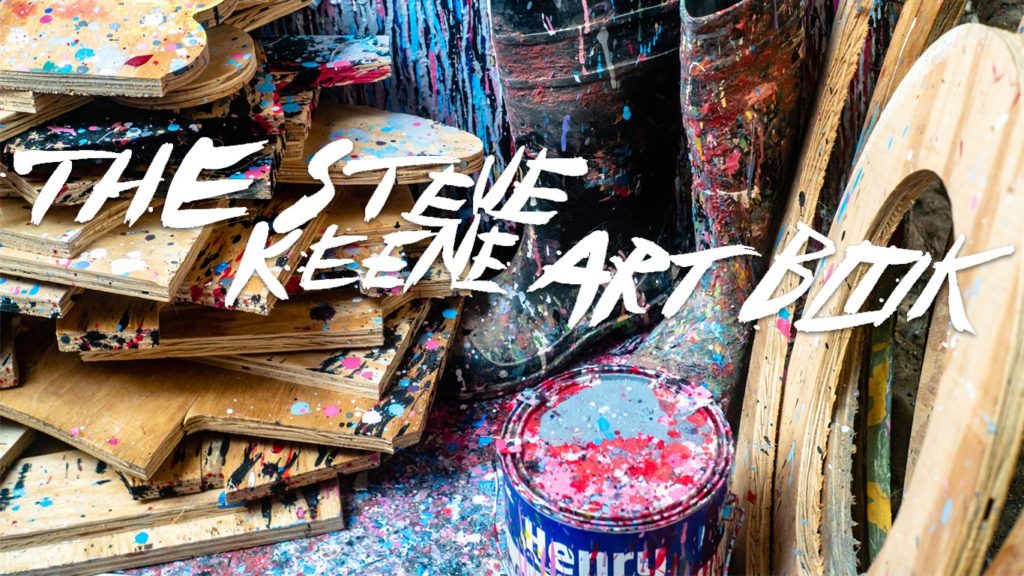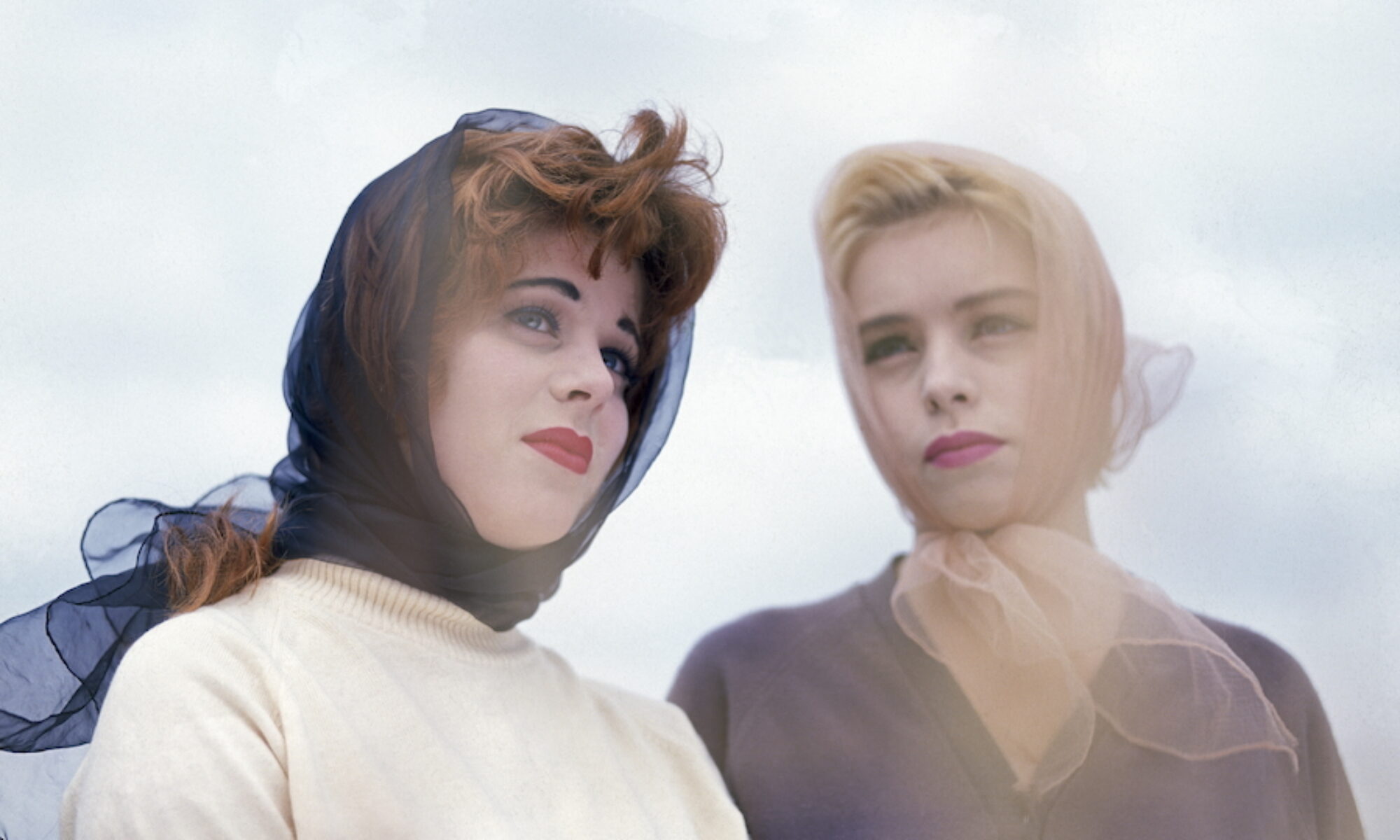By Sam Brumbaugh
An exclusive excerpt from the forthcoming Steve Keene Art Book (Hat & Beard Press)
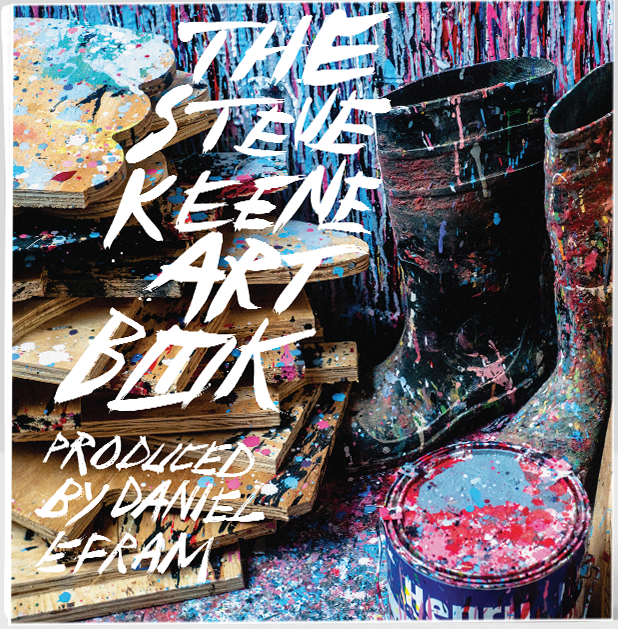
Any old record could be beautiful. Brazil ’66. The Frost. UFO. Orpheus. O.C. Smith. Tom Ghent. The Buckinghams. Renaissance. Johnny Rivers. Wishbone Ash. Danny O’Keefe. Melanie. Glass Harp. For a dollar or two, Steve Keene and his wife, Star, found the most amazing songs on cut-out bin albums. Breezy tunes with a creepy edge, heartfelt pop injected with dark hooks, equally joyful and awkward. The easy price and diamond-in-the-rough vibe mirrored the wide-eyed humor, sly depth, and openness of Steve’s art. Records like his paintings on the Threadwaxing Space walls, great stuff right there, cheap and within reach. We used to play Steve’s music at Threadwaxing shows, and I remember suddenly feeling like we were doing something right when a couple of kids came into the room one night while the Left Banke’s “And Suddenly” played over the PA. They were singing along in such a good mood, bouncing on their heels like the floor was made out of Jell-O. Getting a Brooklyn Lager from a keg for a dollar a cup, hundreds of bargain-basement paintings coating the walls in red glow as far down the impossibly long space as you could see. The room felt like it could go on forever, walls as full of color, motion and shadow as the crowd. The paintings not quite exact replicas of each other, hurried brushstrokes and comments across the images as if somehow the art was heckling itself. Or heckling the idea of prints, and somehow at the same time, of unique “pieces.” $1. $2. $5. $10. $20. Signs stapled to the walls: Art for Sale. Cheap!
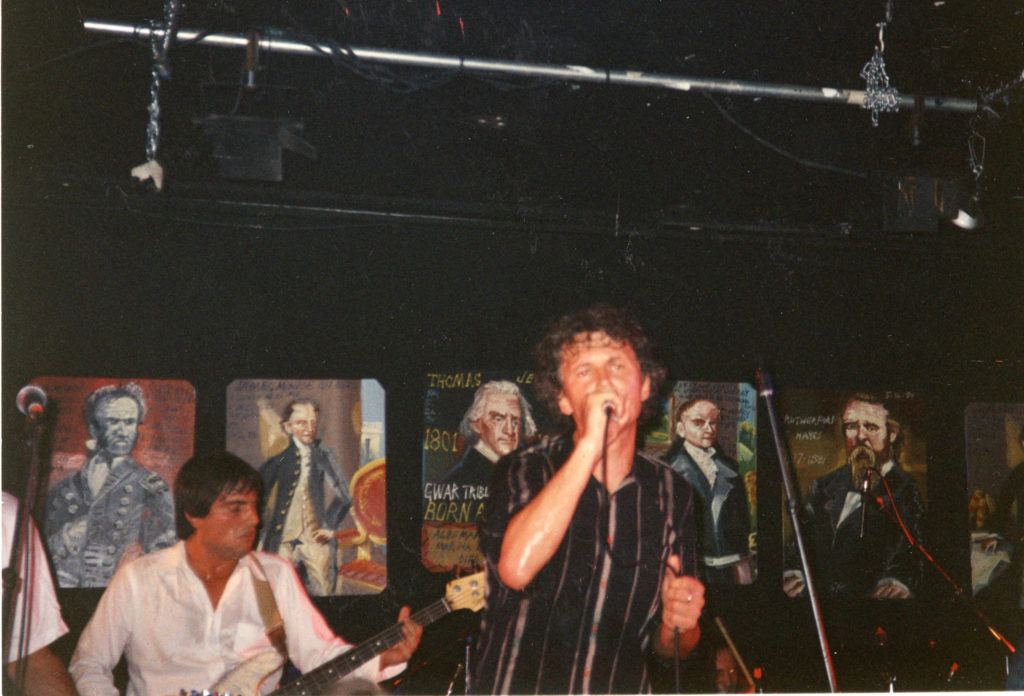
To claim a painting, half the time you had to get a ladder, and (probably) drunkenly climb it in the middle of a dense crowd watching intense bands such as Shellac, Slant 6 or Boredoms. You’d balance there while writing your initials on a strip of masking tape, stick it on the painting, and then descend. We didn’t know enough at the time to fret over slip-and-fall lawsuits. We didn’t really know much of how to do anything. I’d worked at a magazine and a restaurant, knew Keene and a couple of the Pavement guys, and that they wanted to do a show together. I vaguely knew Tim, the owner of Threadwaxing, a long second-floor loft space on lower Broadway, so I called him up, and we just jumped into doing live shows one night in 1993, completely without a clue. We were always running out at the last minute to buy cups, fans, bags of ice. Late on soundchecks, behind on doors—a long line always snaked out the building, down past Broadway’s gated textile shops and around to Broome Street. Neglecting to introduce bands or introducing them when they didn’t want that, forgetting to put up the city-mandated “No Dancing” signs, overloading guest lists, running late on the run-of-show, our capacity always in mysterious flux. It was all part of the charm of the place, I’d try to tell myself. But Steve was on time from day one, there two days before a weekend of shows to begin his hard labor, double all-nighter installs (painstaking wiring in hooks to hundreds of freshly painted and sawed plywood, hanging them by the dozens on makeshift wires he’d stretched across the walls).
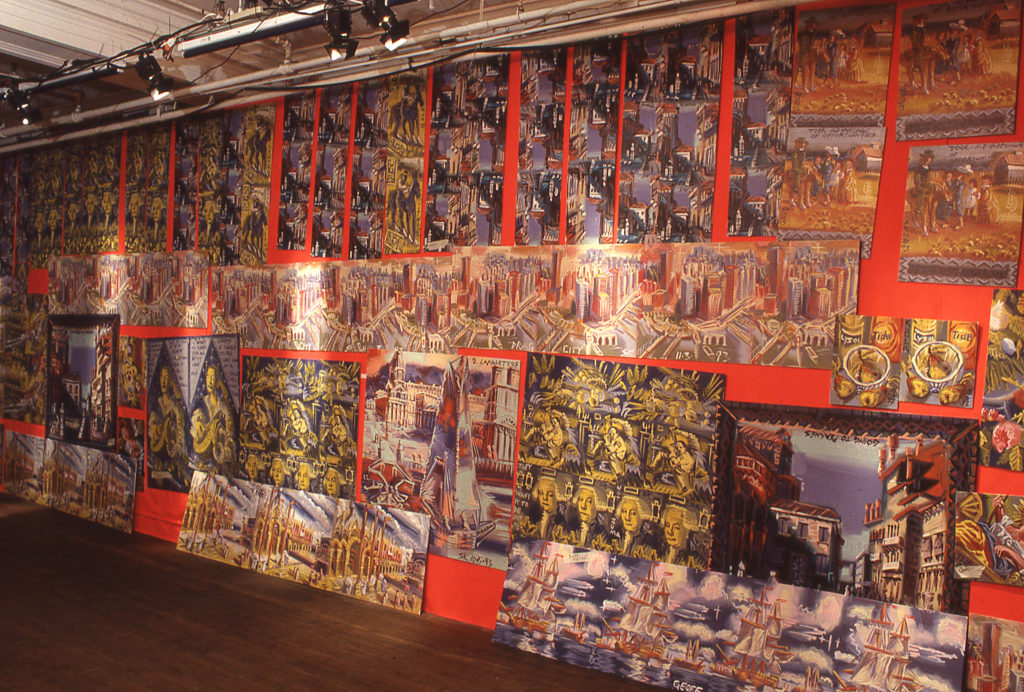
With the sudden success of the shows, the big crowds, the agents calling, the press coverage and MTV crews, things quickly felt precariously close to overwhelming. But Steve had a work ethic and self-assurance I took careful note of. And soon enough, I saw that behind Steve’s slapstick lines and slapdash surfaces was a rigor of theory, skill and a method of original process so atmospherically definable that all I had to do was book good shows and make sure there was plenty of beer and booze.
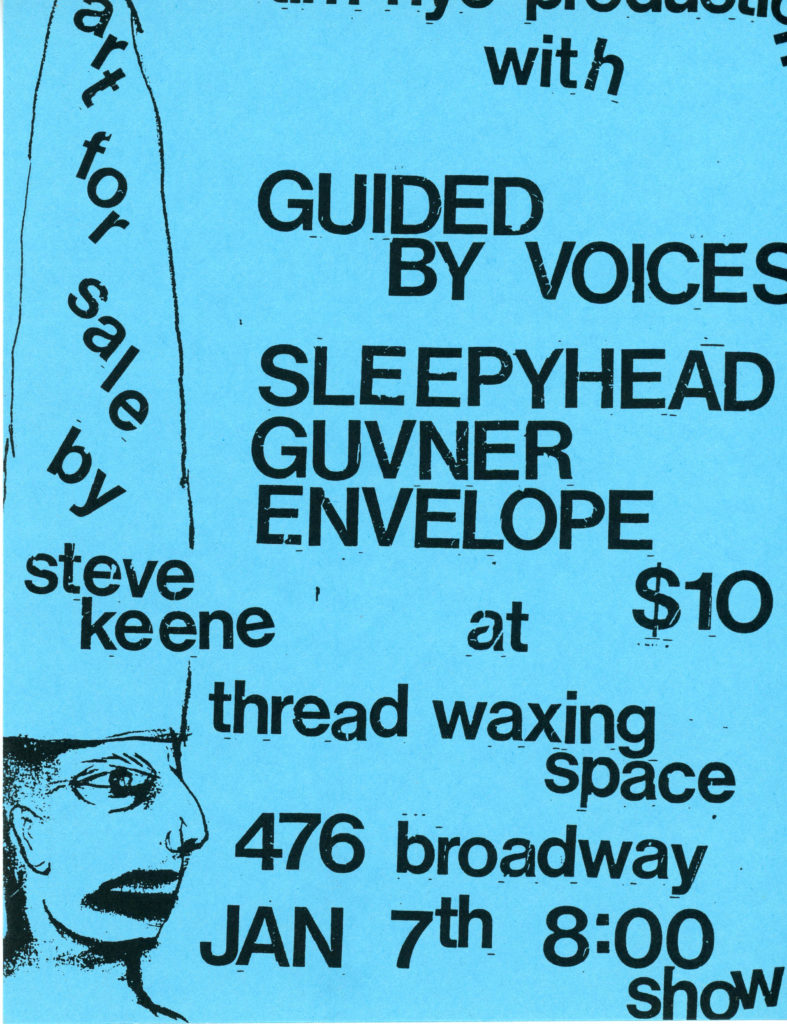
Fortuitously for booking shows, the early ’90s indie scene was finally beginning to get going in the city, gelling around record stores such as Kim’s Underground (soon to morph into Other Music) in Manhattan and Pier Platters in Hoboken, the Lower East Side bar Max Fish, college radio stations WFMU and WNYU, and venues such as Maxwell’s, the Knitting Factory and Irving Plaza. Art students in ski sweaters. Scrawny musicians in corduroys and T-shirts. Zine girls in pigtails. Pale, bearded dudes looking like they hadn’t crawled out of their rent-controlled apartments since 1978. Dame Darcy in her wicked witch shoes, white makeup and flowing black Victorian gear. The kid who dressed like a Don’t Look Back–era Dylan, complete with peg pants, dark Wayfarers, fuzzed-out hair and a kinetic bop to his stride. Leonardo Drew. Tinuviel. Rita Ackermann. Grasshopper. Jacqueline Humphries. Stewart Lupton. A lot of these artists and musicians coalesced at Threadwaxing.
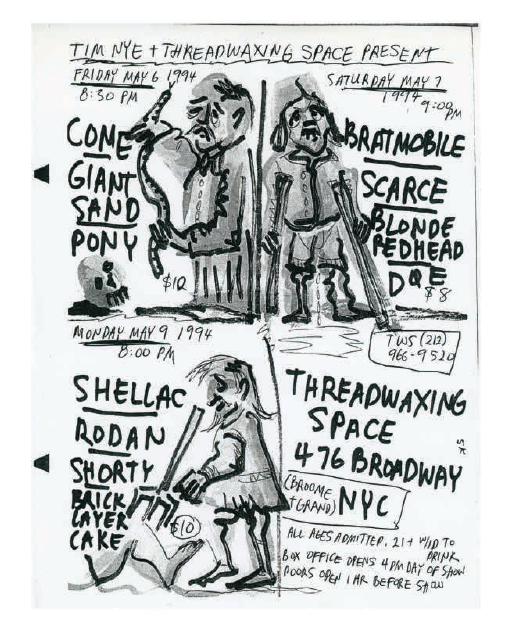
Until then—outside of the Sonic Youth crowd—there hadn’t been much natural comingling between the downtown art and music worlds. Bands out of the New York art scene were categorically self-conscious and usually pretty bad, and there wasn’t any decent kind of local indie scene. A lot of aging rockers and art denizens had a pinched vibe, seemed “pickled” with coolness, as Steve liked to say, with a collector kind of possessiveness about who you were seen with, where you were seen, and when. Superficially and in conversation, art world people were pretty self-confident, while the indie kids didn’t take themselves so seriously. Steve bridged the worlds by being both those things, and by also being both instinctively enthusiastic and sharp-tongued. He was a relief with his alert cackle, oddly hunched amble, and anything-goes tuneage, with his hectic art-covered walls that gave Threadwaxing a loose, carnival-like atmosphere. Steve brought humor and accessibility to the scene, and these were an essential part of the community.
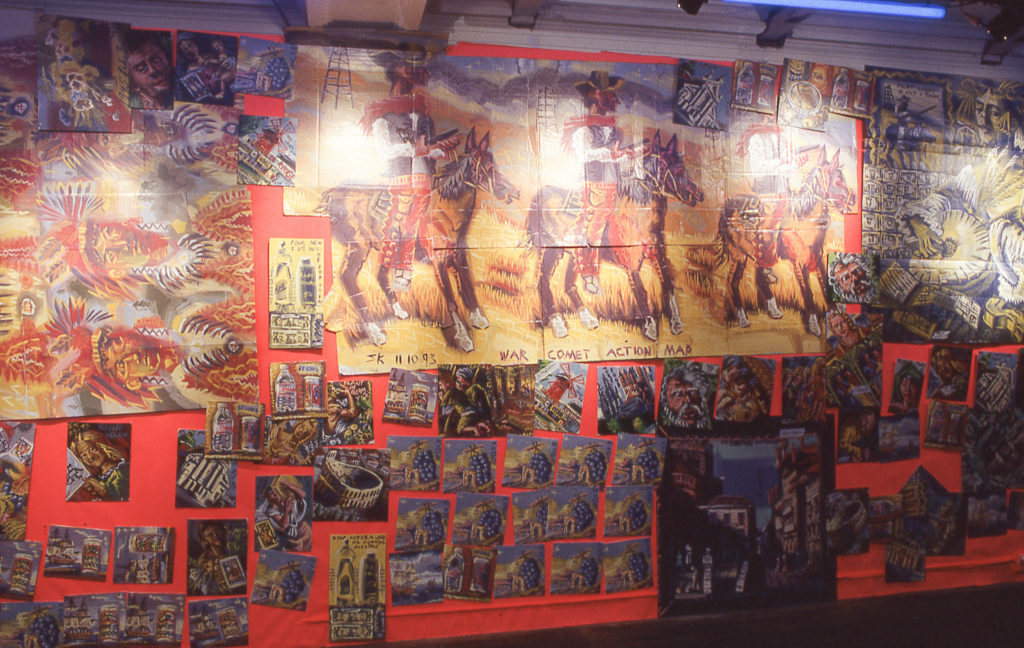
Community is a word that can sound kind of corny, but in the early ’90s there was a (necessary) cold standoffishness to living downtown—a lot of the Lower East Side was perpetually shitty, getting worse, and at night you had to know how to traverse certain patterns of blocks to avoid gun-toting dealers and agitated crack crazies. People seemed angrier back then, more alone, and there was often some kind of confrontational vibe in the air. I, for one, was never too psyched to be walking into some isolated bar full of hard stares and a jukebox’s brittle sounds of Helmet or Alterations. Community was needed, and suddenly there were all these indie bands coming through that crackled with new forms of delivery, who were somehow—like punk—needling the sacrosanct. Steve was able to frame them in a room with an equally bright kind of energy. His art aligned perfectly with the scene, was a focal point even, in both subject matter and method. Hard work not appearing to be hard work, a loose cleverness and warmth of judgment. There was a charm to the serious intent of the amateurism. Nobody was in any kind of hurry, to paraphrase Stephen Malkmus, and—taking another cue from punk—if you imitated a good sound well enough, had something to say or a certain way of dressing, you’d get your shot.
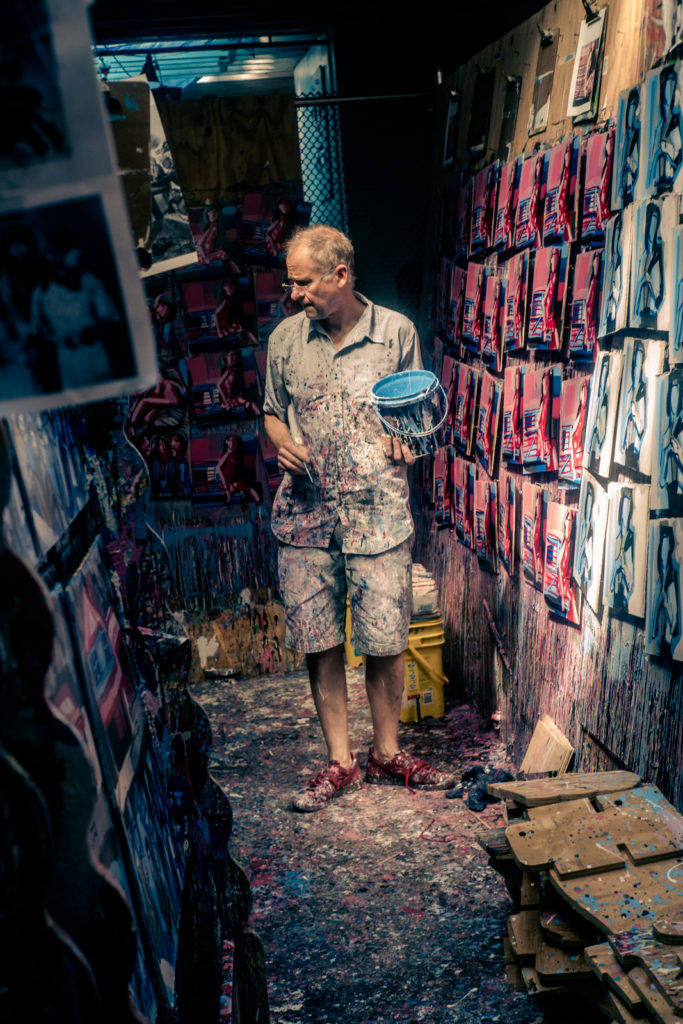
Steve was one of those artists, like Chris Johanson, whose work has the illusion of self-taught naivete. At a cursory first glance you’d think, Oh, I could maybe do that… Which, of course, was not true. But I remember the thousands of people going through Threadwaxing in those years staring at the incredibly vast array of images, and how it might have stoked belief in the possibility of their own attempts. The scene was good that way. It was fine to try. This guy was flinging it out there. Why shouldn’t I? And you could. You’d get an airing, a listen or a look. I mean, most of the people who worked at Threadwaxing were either artists or had bands. I’d just throw their band on one of the opening slots. A practitioner of junkie boogie schtick, a reedy and hesitant singer-songwriter, a Mudhoney-style grunger, it didn’t matter. Some were okay, but even if a band wasn’t good, their friends would come and watch and have a good time, and the set would be fine. James Murphy was our soundguy, and had a band named Pony. Sure, you can open for Railroad Jerk, or whoever it was. Why not? He worked hard, did a good job. Help your friends. Trust people a bit to get on with what they are doing. Give them time to find their way to LCD Soundsystem. The trust and tolerance in the scene, at least early on, was partly a reaction to all the sleaze and fuckery in both the art world and the music biz, and it was exemplified by Steve’s honor system. He’d bring a couple giant, brightly painted plywood boxes and you’d shove one or two or five or ten bucks into the slot at the top of the box when you’d take your painting off the wall.
But all this trust, this polite patience, could also be a problem. I remember the guy from Bitch Magnet complaining about how so many indie bands couldn’t play anything even remotely capably on stage, and what did they think they were doing, putting people through that shit? He got a lot of blowback, but he was right in some ways. There was way too much grating amateurism to endure. Also, the early indie scene was rife with preciously intense fans, and certain shows had a hushed, serious vibe verging on cultish. Reference points could be ridiculously studied. God help you if you looked too preppy or too fashionable or wore a Lemonheads T-shirt to a Bratmobile or Royal Trux show. When Royal Trux signed to Virgin Records, they supposedly bought a purple Jaguar and cruised up and down Avenue A. This was considered pretty cool. This reaction was unusual. Success, money even, was distrusted. Most bands going to majors, their rep dropped a peg. Indie bands at the time didn’t believe in the established methods of a career path and—initially at least, avoided music-biz marketing characterization or the temporary attentions of major labels. Just like those bands, Steve was looking for another way. He seemed to distrust success—or, more particularly, the success of art world acceptance. Threadwaxing was a different kind of opening.
Everything was the process, a system lived night and day, and there were almost no exceptions. At one of the early Threadwaxing shows, Steve came out with the first series of United States presidents. They looked great, popping off the walls. I went up to him while he was hanging. “Wow, Steve, those are amazing. Can I put my name on one of the James Garfields before doors?” “You have to wait,” he said, shaking his head and frowning disapprovingly. No insider access. No exclusivity. Which was okay, I respected this attitude. At doors, I was immediately busy running around doing whatever, and by the time I turned around the presidents had all been claimed. I was pissed, but then felt bad about the instinct to possess. It was the kind of thing Steve hated. (And in a way, he was much more responsible for the shows than I was.)
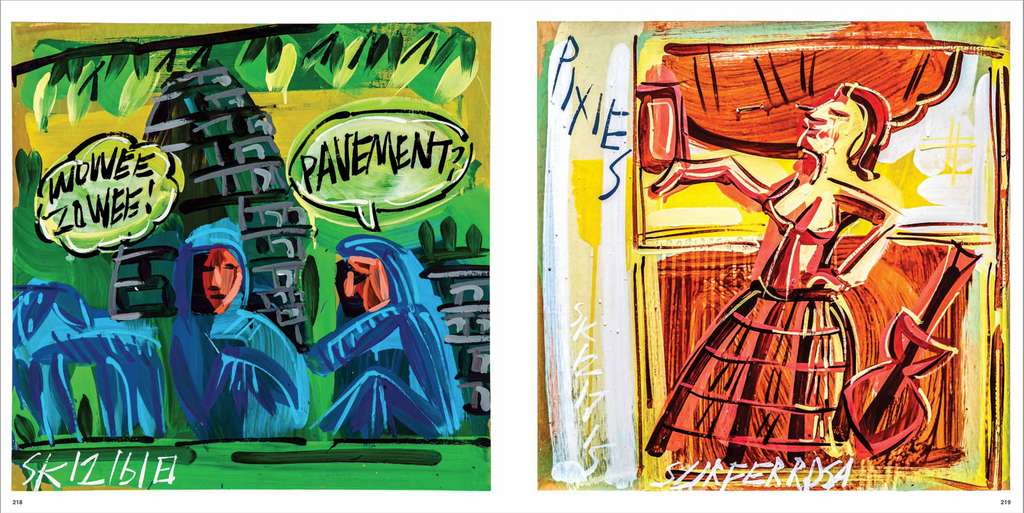
Later that year, he sent me a painting as a Christmas card. Really nicely done with care. Chinese food cartons and a plate and chopsticks. “Chinese Takeout. Merry Christmas from Star and Steve.” I had it up in my Bleecker Street apartment for years until some skater kid friend of a friend stole it along with a bunch of records. Skater kids steal with such ease. There was a skate shop on Lafayette a couple blocks away from my apartment. One time after the painting had disappeared, I went in there to look at shoes. They used to play a lot of Beatles and Scott Joplin (pretty contrary taste for what you’d assume their clientele was into), and Magical Mystery Tour was going around on the turntable. The cover was propped up, and I looked at the faded discount sticker across the mustard yellow and realized it was my record. I was pretty sure the Chinese takeout painting was back there behind the closed office door but Steve’s paintings were always winding their way into random places. This was crucial to him. He loved hearing about the strange locations his paintings would pop up in; someone’s grandmother’s apartment in San Antonio, Dennis Hopper’s L.A. bathroom, on the wall of a bail bonds place in Queens. “Wow, that’s so amazing, that’s so great,” he’d respond with genuine glow. His cheerful feeling of randomness, you see it all in the humor and demystification in his images. An old-school classical view of Venice with “Heavy Dub” written along the bottom. A tossed-off Here Come the Warm Jets or some other fetishized album, where he wouldn’t even bother to write the entire record title. Or Made in the Shade, with Mick and Keith as stick figures with yellow blobs for heads. It was still somehow obvious he loved these records, even though the plywood he used would often warp and paintings would balloon out and wind up un-hangable. Essential demise: probably just another part of Steve’s intent. Like the better indie rock back then, he always had such an ease in his ability to demystify things. And while his work ethic was completely methodical, there was something to the whole ethos of randomness he loved, and that exists not only in the surface of his painting, but deep in his core philosophy. Whether it’s an unpainted plywood edge, dots of unrelated color, a crimped word or a slightly off-kilter hook so you can’t ever hang the painting evenly, there are flaws right there contentedly in plain view. Like the city back then, like the way we ran things at Threadwaxing.
At the end of any given night, the Threadwaxing walls would be pretty ragged and bare, most of the crowd heading out the door and down the steps with a painting or two under their arm. The floor would be strewn with red plastic cups, sticky bits of masking tape, and torn ticket stubs. Clouds of weed smoke evaporating in the air with the sweat, the bands hanging around having a drink before load-out. Steve, wired and tired, drinking beer and chatting to lingerers, but looking around with a mixture of contentment and anxiousness, ready to get going dismantling. When we’d finally clear everybody and lock the front entrance, Steve would take the big plywood box, pry off the top, and dump all the money out. Hundreds of bills swirling in the air, floating to the floor as Star and Steve sat down to begin counting. Mostly all one-dollar bills, but at that moment it seemed like a fortune.
Sam Brumbaugh is a D.C.-based novelist (Goodbye, Goodness) who has written for Open City, Chickfactor, The Minus Times and Vice. He coproduced the documentary Be Here to Love Me: A Film About Townes Van Zandt. He is a music producer and programmer who booked shows in NYC in the ’90s, and has worked for the Guggenheim Museum and the Metropolitan Museum of Art.
All photos and flyers courtesy Threadwaxing Space except where noted.
This is an excerpt from The Steve Keene Art Book (Copyright 2022 Daniel Efram, All rights reserved). Order a copy of the book here. Follow the artist Steve Keene, book producer Dan Efram and Hat & Beard on instagram. The book was designed by Henry Owings from Chunklet. Conflict-of-interest alert: The Steve Keene Art Book was edited by CF’s Gail O’Hara.
